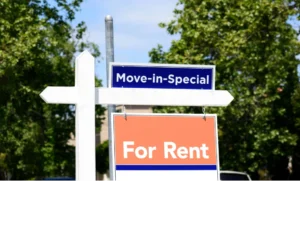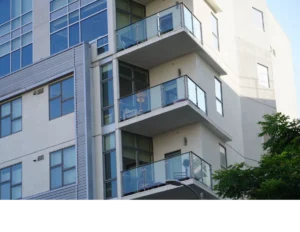
Apartments Are Using Rewards Programs To Keep Tenants as Rental Market Softens
After decades of rent growth, the market for multifamily apartments is starting to soften. In April, average U.S. rents only grew by $6 or 0.07 percent year over year. With less apartment demand, multifamily buildings are looking for ways to keep renewal rates high and vacancy rates low. Generally, the best way to do this is to lower prices a bit, but that isn’t an option for many buildings.
Inflation has pushed many building expenses up, and labor costs for maintenance and repairs have seen some of the largest price increases in the last few years. Plus, buildings are contending with higher interest rates.
Properties forced to refinance at higher rates are seeing more of their operating income used to service their debt. Those with loans coming due in the next few years are growing their cash reserves in preparation for a higher cost of capital.
Rather than lowering prices or building out new amenities, multifamily landlords are increasingly using rewards programs to help their buildings stand out to prospects and keep current renters in place. There are a growing number of options for buildings looking to give tenants rewards.
One of the fastest-growing rewards programs in recent years is Bilt Rewards, which has raised over $450 million for its renter loyalty program. It offers programs that give users travel rewards points for paying rent on time. Bilt has even rolled out its own credit card that awards points when used to pay rent.
Other rewards programs offer direct cash payments for rent payment. Stake is a loyalty program that incentivizes users with cash rather than using points like a credit card. The company claims that buildings that adopt its programs can see their average renewal rates go from around 45 percent without any rewards to 65 percent with them.
Some platforms reward renters with discounts on local services. Amenify is an in-home service provider that gives credits for services like cleaning and pet care. These credits drive the adoption of the program and increase resident satisfaction. “We see a 29 percent increase in satisfaction surveys when credits for services are given to residents,” said Everett Lynn, co-founder of Amenify.
He explained that his clients see increased sales and retention from the programs and an average boost of ancillary income of $60 per unit per year. But, Lynn cautions that rewards should be for things the residents actually want. “In general, any reward needs to save the resident time and money on something of value. Just giving them a useless reward does not influence residents; they are much too smart for that,” he said.
If giving monthly rewards is not in a building’s budget, there are other ways to help residents with innovative programs. Some companies, like Obligo, offer a way to eliminate down payments for new renters. This can help relieve a financial burden that can influence a resident’s ability to sign a new lease. It can also make managing and returning down payments an easier, less time-consuming process for the management team.
Rewards programs don’t have to be tied to technology; they can be created by a property management company. But, these DIY programs often fail to have the same effect as those purchased through a third party. Just creating the reward is only the first step.
To create a successful program, property managers need to find ways to get residents to take advantage of it. In order to extract enough value from the programs to make offering the rewards worthwhile, residents need to be educated about the programs, and information about the rewards needs to be marketed to prospects.
These factors are often better handled by vendors who have tested and refined their techniques on properties en masse. As the multifamily market slows down, properties will need to be more creative with their loyalty programs to stay ahead of other buildings, many of which offer their own versions of rewards.
Implementing an effective rewards program requires a strategic approach. Property managers need to analyze the preferences and needs of their residents to ensure the rewards offered are meaningful and valued. This involves conducting surveys and gathering feedback to tailor the programs to the specific demographics of the building.
Importantly, a successful rewards program should be easy to understand and use. If the process of earning and redeeming rewards is too complicated, residents may not participate, rendering the program ineffective.
Marketing these programs is equally important. Property managers should use multiple channels to communicate the benefits of the rewards program to both current residents and prospective tenants. This can include email newsletters, social media posts, and informational sessions.
Clear and consistent communication helps ensure that residents are aware of the rewards available and how to access them.
As the multifamily apartment market softens, property managers must explore innovative strategies to maintain high renewal rates and low vacancy rates. Rewards programs offer a promising solution by incentivizing residents to stay and attracting new tenants.
By understanding residents’ needs, effectively marketing the programs, and partnering with experienced vendors, property managers can create compelling rewards programs that enhance resident satisfaction and retention, ultimately helping their properties stand out in a competitive market.
Source: Propmodo













 Accessibility
Accessibility